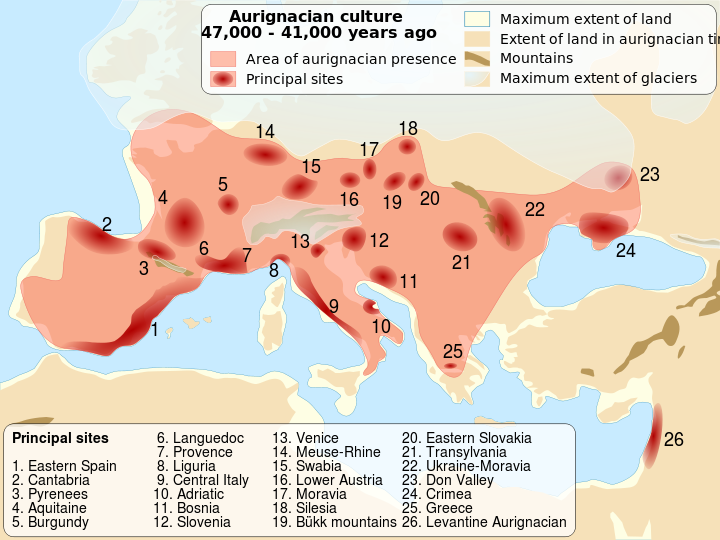The Aurignacian culture (pron.: /ɔrɪɡˈneɪʃən/ or /ɔrɪnˈjeɪʃən/) is an archaeological culture of the Upper Palaeolithic, located in Europe and southwest Asia. It lasted broadly within the period from ca. 45,000 to 35,000 years ago (about 37,000 to 27,000 years ago on the uncalibrated radiocarbon timescale; between ca. 47,000 and 41,000 years ago using the most recent calibration of the radiocarbon timescale[1]). The name originates from the type site of Aurignac in the Haute-Garonne area of France.
The oldest known example of figurative art, the Venus of Hohle Fels, comes from this culture. It was discovered in September 2008 in a cave at Schelklingen in Baden-Württemberg in southern Germany.
(snip)
